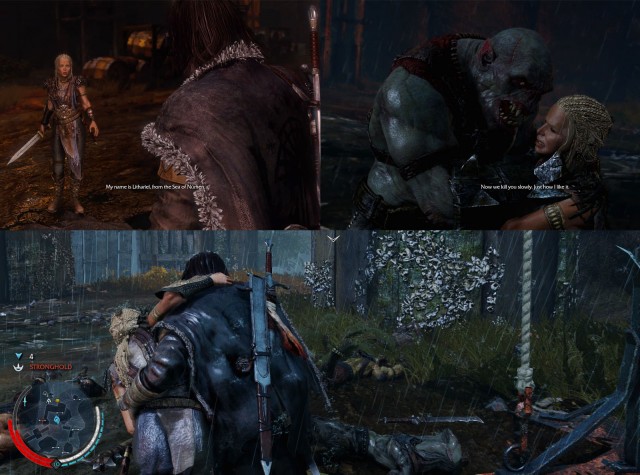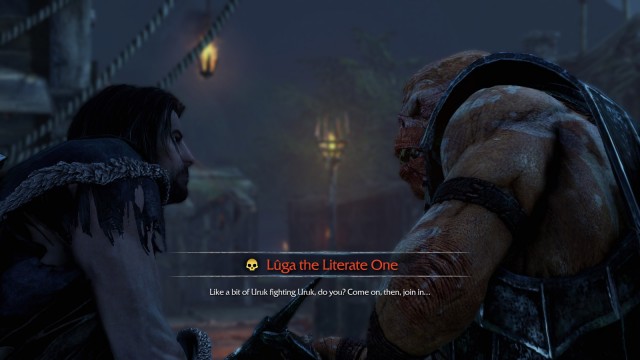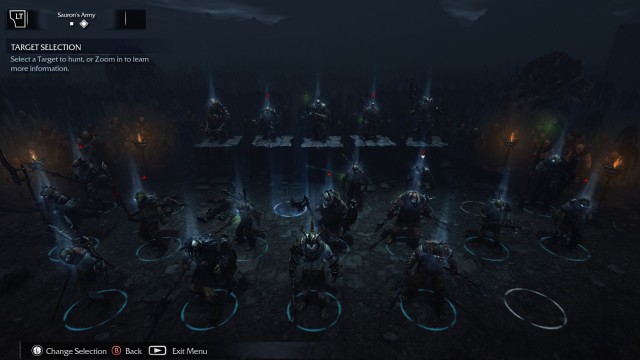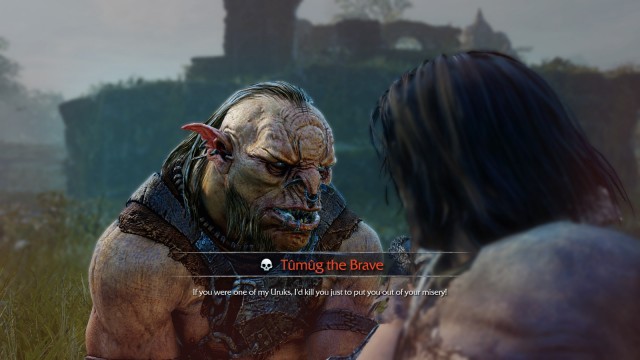Back in the 90’s I used to play Middle Earth: The Lidless Eye which was a collectible card game about being a Ringwraith. Unlike Magic The Gathering and similar games, MELE was not as much about defeating the opponent, but about being the best minion of the Dark Lord possible. Your mission was to recover ancient artifacts, recruit powerful allies and convince major Middle Earth factions to side with Mordor. Whichever Ringwraith secured more resources won. You could also play against someone with Middle Earth: The Wizards deck, who would be doing the same thing, but for the good guys. The players could only fight directly if their minions visited the same location at the same time (a rare occurrence, and easy to avoid if you did not want a direct confrontation) and instead they would try to thwart each-others efforts by playing environmental hazard cards as the enemy minions traveled.
It was more of a board game with quasi-RPG mechanics, but this was why I loved it. Most of my Friends had Istari based decks, full of Dwarfs, Elves and Hobbit heroes. My deck was full of Orcs, Trolls and evil men and I loved it that way. So did they actually, because it was fun to play these good vs evil games. It felt like there was much more at the stake.
You know what I loved best about that game? That Orcs, Trolls and The Nine fallen kings were given names (not always cannon names mind you, but I did not care). It is a simple thing really: give an entity a name, and it becomes a person. It becomes imbued with life and personality. I could write an entire sitcom worth of stories about Gorbag, Grishnákh and Muzgash – the three plucky Uruk Hai minion-friends who got into all source of trouble all across the Middle Earth.
In Shadow of Mordor I became frenemies with Ronk The Flame Monger, who just wanted to learn how to ride a caragor beast while wearing his absolutely awesome flame hat.
No, seriously guys, lets take a moment and take in the glory that is Ronk’s hat. As far as I could tell it was unique in my game, and I have never seen it repeated on another Orc captain. I don’t know how it works, or how Ronk prevents his head from being over-heated, but I do think the looks magnificent. He quickly became my favorite and I was overjoyed to help him win duels with other, less fashion conscious Uruks. I loathed having to kill him but the game said I had to. It is a systems thing: in most video games your objective is to bring about a positive change via destructive force. You are always killing enemies, destroying their infrastructure, toppling evil tyrants and etc.. Hardly ever do you get to affect the game world in a positive way by adding something to it – you are almost always a force of destruction and erasure.
Ronk died without ever fulfilling his dream because he had the misfortune of being an Orc leader whose path intersected with half-man half elven wraith assassin and the titular Shadow of Mordor. Oh, you thought that was about Sauron? Nope, that’s you: the protagonist. The silent assassin, ghostly killer, Robert Neville of Mordor but without the “I am legend” epiphany. Your objective in the game is to perpetrate a campaign of terror against the Uruk-Hai natives of Mordor. You use bodies of slain Orc captains to get to their War Chiefs and you use their deaths to draw out and slay the big-boss minions who take their direct orders from the Dark Lord. And when taking Orc lives is not enough your Wraith-half, teaches you how to take over their bodies.
The void that the death of Ronk Flame Monger left in my life was not filled until I met Lûga the Literate One.
Perhaps he did not look as cool as Ronk, but his love of literature has won me over. From the moment we crossed swords, I knew this was going to be a long lasting bromance. At that time I had already learned how to “brand” orcs, making them into friendly NPC’s. And so, after defeating Lûga I used my wraith powers to convert him into my own minion. This was really the only way to save his life. If he was not one of “my” Orcs he would continue being an obstacle in my way, and would have to be toppled. We had a good system going: Lûga would challenge another captain to a duel, I would swoop in and either shank his opponent in the back, or brand him. Lûga would take the credit for the victory, quickly rising in the ranks. Soon he became a War Chief and helped me to either brand or topple all the other War Chiefs.
I had a full control of the local Orc society – all of the War Chiefs and captains were branded, and loyal to me. When I heard there was a new captain who rose to power on my turf, I quickly sent Lûga to challenge him. I dodn’t want him dead – I just wanted his eyes to glow blue. As I was branding the plucky upstart, I had a sudden epiphany: I was the new Dark Lord or Mordor. And it felt good. Almost too good. I presume that this is precisely how the Nine Kings fell and became Ringwraiths in the service of Sauron. Because they were offered the same kind of power.
In fact, I realized that perhaps my power was actually more sinister than than theirs. Both the Nine Kings and the game’s antagonists such as The Hammer of Sauron and The Tower ruled by fear and respect. Orcs followed them either because they dared not to refuse their orders, or because they looked up to them as strong leaders. But a disgruntled Uruk-Hai in their armies had options: he could walk away, challenge his superiors, plot revenge. My minions could not do that: my power over them was absolute. I don’t even know what books Lûga liked to read, because I was using him as a tool. He became a weapon in my arsenal without any agency of his own. He was an empty shell, forever bound to my will.
The Uruks of Mordor keep human slaves which is one of the many ways the game tries to justify the terrible violence and destruction you unleash upon them. But even though their bodies are bound and broken, the spirits of these slaves are free. As you explore the game world, you can often hear the slaves talk amongst each other: they tell stories filled with hope, they sing songs and sometimes even laugh. Orcs whom I branded can’t do any of that. They just stand there, their eyes glowing with the unearthly wraith energy. What I have done to them is a hundred times worse than what they have been doing to the humans. I have chained not their bodies but their minds. I became a monster: an absolute, irredeemable villain masquerading as a hero of the people. I have fallen lower than anyone in the Tolkien lore, and I did not even have a cursed ring to blame for my moral lapse.
You might be tempted to blame Celebrimbor for this, because it is his power that was used in branding, and he has been guiding your hands throughout the game. But while he is not necessarily a good guy, his ultimate goal was to strike a blow against Sauron, and put things right after his own greed and lust for power destroyed his own kingdom and put all of Middle Earth in peril. At the end of the game, he is ready to move on and leave the mortal realms behind. I thought this was a good thing. Both Celebrimbor and Talion would get their final rest, and all the Uruks who survived their reign of terror would be freed from under their influence. They would go back to doing whatever it is that Orcs do when they are not being lead to war by some dark power. But at the last minute Talion convinces Celebrimbor to stay and continue their partnership – you know, in case of a sequel. And that’s absolutely frightening.
It actually shows how little self-awareness the designers had when they crafted the games mechanics. At the very core, the game is very much an exploration of colonialism. Talion is a “civilized” outsider who finds himself among “barbarians” who he neither understands, nor respects. He sets out to disrupt and neutralize their power by coercing or assassinating their leaders to impose his own cultural and moral values onto those people. Mechanics reinforce this, but the story refuses to acknowledge these dark undertones and instead it pretends to be a heroic power fantasy. It is almost as if the story and the game mechanics were designed by two separate teams who did not communicate with each other – which seems to be a common trend in modern video games.
You can’t divorce game mechanics from the story any more than you can do with visuals and music. All of these parts contribute to the overall player experience, and all of them come together to tell a story. Shadow of Mordor is a great example of a really fun game in which the story and mechanics are at odds with each other. You can identify with Talion as a heroic figure only up until you actually realize the implications of the “branding” mechanic which becomes fairly important in the later game. An apt storyteller would try to capitalize on this, and depict Tallion’s inner struggle. But the hero never actually thinks about what he is doing to the Orcs. He hates them, and considers them inhuman monsters to be used as tools in his campaign against the Dark Lord… But you wanted to represent them as sub-human monsters, then why give them all names, goals, dreams and fears? The answer is obvious if you read the developer interviews. It is mechanics: engineered and designed completely separately from the story.
I want to give the writing team some credit for capturing the essence of Tolkien’s Uruk society, for crafting cool villains and aptly telling the story of Celebrimbor despite having to work against conflicting mechanics. But can I really do that? I mean, they did enough research to do deeply hook their story into Silmarilion lore, but not enough to comment on the Orks as subaltern people critiques of the text? The discussion about colonialism in Tolkien’s writing have been an academic staple for decades now – it’s not like we’re breaking a new ground here.
Perhaps this is a symptom of what I like to call a “professional fan fiction writer syndrome” – which is what happens when you tell a die-hard fan to write an adaptation of their favorite thing. They tend to be too close to the source material to step back and objectively look at the critique of the text, and thus unknowingly amplify the source works biases and problematic themes. So perhaps I could forgive them for being over-eager fans and trying really hard to do Tolkien justice.
But if I’m going to do that, then I also have to mention that their story would be ripe for Tropes vs. Women analysis. There are three female NPC’s in the game: first gets put in the fridge to provide motivation for the protagonist, second is remote controlled by Saruman and the third gets damseled and you literally have to carry her out of an Orc stronghold.

There is about 20 minutes of game play between the moment you meet the brave warrior Litrhaiel and the point where she gets super-damseled and you need to carry her to safety.
This is quite sad, especially seeing how that entire rescue mission was not only pointless but annoying from purely mechanical standpoint. It combined all the worst qualities of an escort mission while at the same time forcing you to move at an excruciatingly slow rate. I guess the writers really wanted to have a heroic moment for Talion to remind players he is not just a shadowy assassin and they figured the best way of doing so is to throw a woman under the train.
There is also that thing where your assassination tutorial consists of sneaking up on your wife to give her a surprise snog which is is weird and unsettling for a whole plethora of reasons.
Did I have fun though? Hell yes. Painting the Orc leader-board blue with my Wraith Flame was more satisfying than it had any right to be. The game actually helped me to find a whole new level of appreciation for Frodo and the temptation he must have felt while carrying the ring. I did not even have a ring, and I was having way to much fun being a pseudo-Ringwraith. The Nemesis system is really cool, and I hope that procedural NPC generation really catches on. I’m looking forward to seeing what other games will do with it.
That said, once I have killed or branded all the Orcs on the board, the game lost a little bit of it’s charm. The only thing left for me to do was to hunt for collectibles, do timed trial missions (bleh) or finish up the story. I wish I could have done more with my hordes of minions. All I really wanted was to be able to issue constructive orders. Like, how awesome would it be to order my underlings to free their slaves, to put Uruks to work repairing strongholds or rebuilding villages. If the game suddenly turned from revenge power fantasy into a city building simulator where you get to manage your armies, make sure they are fed, equipped, trained and have to resolve local disputes as an impartial judge, I would not mind at all.
In fact, I kinda wish the whole branding mechanic would not even be there. After all, Orcs follow strong leaders, no? So what if you could simply defeat an Orc leader in a duel and take his place as a leader? What if you could earn loyalty and gratitude of orcs by sparing their lives, helping them win a duel, or rescuing them from a Caragor. Wouldn’t that make more sense? Wouldn’t that remove at least some of the uneasiness that came from enslaving hordes of Uruks and using them as weapons?




Wait, killing and mind-controlling orcs is okay for our hero because they are evil and keep slaves and etc. but when he ends up ruling all the orcs, he doesn’t bother to have them set their slaves free? Aren’t they actually his slaves at that point? That’s pretty unheroic even for a “darque” brooding anti-hero.
Anyway, procedurally generated NPCs are a really great idea, but I don’t understand why they chose to make them enemies. Allies would be a much more natural application, at least on the first attempt, I think. Now if only someone made a Brütal Legend like game where (some of) your soldiers are generated like that…
By the way, why can’t I see this post on your blog’s front page? I only found the link on twitter.
Never mind, now I can see it.
Well, it is never explicitly mentioned. When you “dominate” an Orc slave handler, the human slaves typically just run away (though it is the exact same reaction script as if you would kill him). Also, you typically only see un-bound Orcs watching over groups of slaves so you could argue that you are more or less “freeing” the slaves indirectly. But, there are always unbound Orcs spawning in the world, and they do keep slaves. Your branded captains are their de-facto leaders and they don’t mind and mechanically you can’t do anything about that.
So Talion, may prohibit his Orc puppets from personally keeping slaves, but he can’t have them influence their underlings to do the same. So systemically slavery continues because there is no “system” for managing it – most likely because the designers did not give a shit. Which is understandable seeing how managing the way game handles player death for example is probably a more immediate and interesting problem than modeling social implications of mind control versus slavery. Still, it does come up, and it does rub you the wrong way if you notice it.
Oh, and sorry for the front page. WP-Cache plugin is being weird lately.